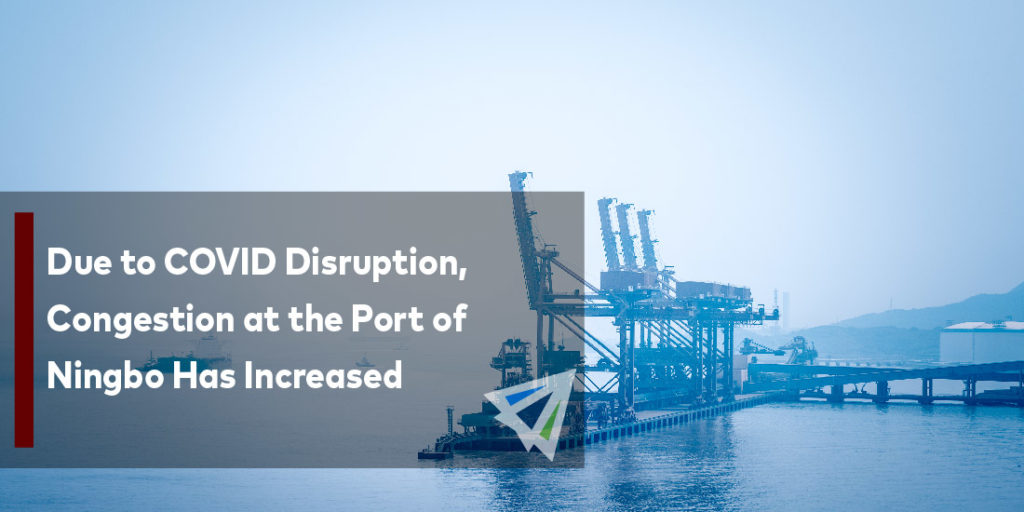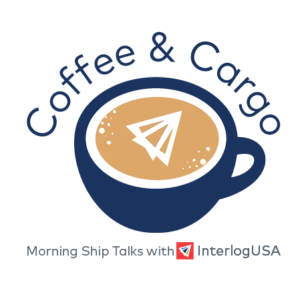Competitive Edge
January 12th, 2022
Stay Current with Interlog’s Weekly Newsletter:
Sign up for our next Coffee & Cargo webinar –> CLICK HERE
To watch last month’s webinar –-> CLICK HERE
Ocean Freight Market Update
Headlines
- Each week of pandemic-related delay at China’s Ningbo port could disrupt $4 billion worth of trade, according to Russell Group, a risk modeling consultancy
- Los Angeles/Long Beach ports announced delaying container dwell fees for the eighth week
- Green corridors, specific trade routes between major port hubs where zero-emission solutions are supported, are a proposed solution for decarbonization in the shipping industry
- China, the world’s largest crude oil importer, risks oil demand as the country continues its staunch zero-Covid policies
UPDATE: U.S./Canada Port Congestion
- Savannah: 23 Backlogged Vessels
- Charleston: 16 Backlogged Vessels
- Norfolk/Newport News: 28 Backlogged Vessels
- Los Angeles/Long Beach: 76 Backlogged Vessels
- Note: This does not include LA/LB bound vessels waiting at ports of origin
- Vancouver: 72 Backlogged Vessels
IMPORT: Asia to North America (TPEB)
Recent Developments:
- Pre-Chinese New Year cargo rush raises premium rates even higher as shippers with urgent cargo are willing to pay more for sought-after space
- Capacity and sailings are limited due to sliding schedules, piling delays, and blanked sailings related to port congestion
Rates: Rate increases were activated for the first half of January, on par with GRI levels last summer. Rate levels remain elevated and are expected to increase over January with pre-Chinese New Year demand. In turn, more shippers and importers are converting bookings from standard to premium.
Space: Space remains critical.
Capacity/Equipment: Capacity remains severely under. Equipment deficits critical.
TIPS: Book at 4 to 5 weeks prior to CRD. Strongly consider premium service—sooner than later as it may become limited.
IMPORT: Europe to North America (TAWB)
Recent Developments:
- Schedule reliability is expected to diminish as winter weather affects the North Atlantic
- Likelihood of port omissions and port rotation changes continue into the mid-term
- USEC port congestion remains manageable, and some lines are reinstating their Savannah call as January 2022
- USWC remains heavily congested at Los Angeles and Long Beach ports
Rates: Rates levels are stable, but extremely elevated.
Space: Space remains critical, especially for the USWC.
Capacity/Equipment: Capacity remains tight for both North Europe and Mediterranean services. Equipment availability at ports, however shortages remain at inland terminals.
TIPS: Book 5 or more weeks prior to CRD. Strongly consider premium service for higher reliability and no-roll guarantees.
EXPORT: North America to Asia
Recent Developments:
- Diminishing schedule integrity is contributing to void sailings, delay, and challenging post earliest return dates
- Vessel arrivals remain fluid for USWC POLs
Rates: GRI advisories are out for transshipment ports and Oceania destinations for early February.
Capacity: Available capacity remains fluid for USWC POLs. USEC capacity has become for readily available.
Equipment: IPI origins remain adversely affected by deficits on containers and chassis. Standard equipment availability has not been an issue, but special equipment is remains elusive.
TIPS: Book 4 to 6 weeks prior to CRD to secure equipment and vessel space.
AIR FRIEGHT: United States
- Export demand has slightly subsided, and capacity has become manageable.
- Several flight cancellations have happened due to Omicron concerns, and severe weather conditions in some regions of the country.
- LAX/ORD/JFK terminals have reduced the backlog of inbound cargo rendering a positive effect on export side of things.
- Rates to Latin America have decreased, but remain highly elevated compared to normal levels.
- Rates to Europe and Asia, respectively, are stable compared to previous weeks.
- Average dwell time at European hubs is slightly reducing as congestion improves.
TIPS: Book early considering the current dwell time at airports.
Did You Know?
Roughly two thirds of ship crews around the world do NOT have any means of communication while on open sea!
Freight News
Covid restrictions in China have caused some delays for ocean and air shipments
Last week in the Beilun district of Ningbo, Chinese authorities temporarily locked the area and have increased testing for workers, as about two dozen COVID cases at a factory were confirmed, according to Freightwaves. Truckers that do receive a permit from the local government in the Zhejiang province are required to take two nucleic acid tests within three days and are unable to leave their vehicles while in the marine terminal, according to Freightwaves. With these new restrictions, there has been an increase in delays for truck drivers who shuttle loaded and empty containers between the port and the factories, but as of now, it has not significantly impacted vessel operations at the container terminals near the Beilun district. The biggest concern are the potential backlogs that could be hindered due to these restrictions and testing requirements.
Now this week, import and export operations in Tianjin have slowed because of the increases of nasal swab testing at the port and airport staff, this is due because of a small amount of COVID cases during the weekend. Marine terminals at the port are operating as normal, however inbound gates have reduced hours, and truck drivers MUST register for access to the port, after passing their own health test, Freightwaves reported. In addition, according to Freightwaves, authorities in Shenzhen are blaming a contaminated import shipment from overseas, that infected a cargo worker and spread the virus to three other people. Now, in order to enter or exit the airport and port of Shenzhen a nucleic acid test report within 48 hours is required.
As the start of the New Year has begun, this is less than ideal for freight transportation companies and shippers. Our experts will be discussing this and the impact it has on our Webinar next week, Wednesday January 19th, at 10am Central Time Zone.
Offshore congestion of container ships continues to get worse, as the volume of inventory waiting on the water continues to increase
As of last week on Thursday, over 100 container ships were waiting for berths in Los Angeles and Long Beach, a new record. According to Freightwaves, of those container ships only 16 were within 40 miles of LA/LB, and 89 were waiting or just outside the new Safety and Air Quality Zone.
The congestion is not just impacting the LA/LB ports, ports all throughout the U.S. have been impacted with congestion as well. According to Freightwaves, as of mid-day Friday MarineTraffic data showed eight container ships anchored off San Francisco Bay near the Port of Oakland, four container ships were waiting for berths in Seattle/Tacoma, and five container ships were anchored or loitering off the shoes of Houston – and that’s just on the west coast and near the south! According to Freightwaves, on the East Coast, there were six ships waiting off the ports of Charleston, South Carolina, with an additional four waiting off Virginia.
With the start of Chinese New Year in China and the Winter Olympics in Beijing beginning very shortly, it is no surprise that this congestion keeps mounting up, and most likely will continue to do so for the time being.
Sign up for our
industry answers
Our team works to provide valuable, unique, and relevant content to assist you in finding solutions. Sign up now.

